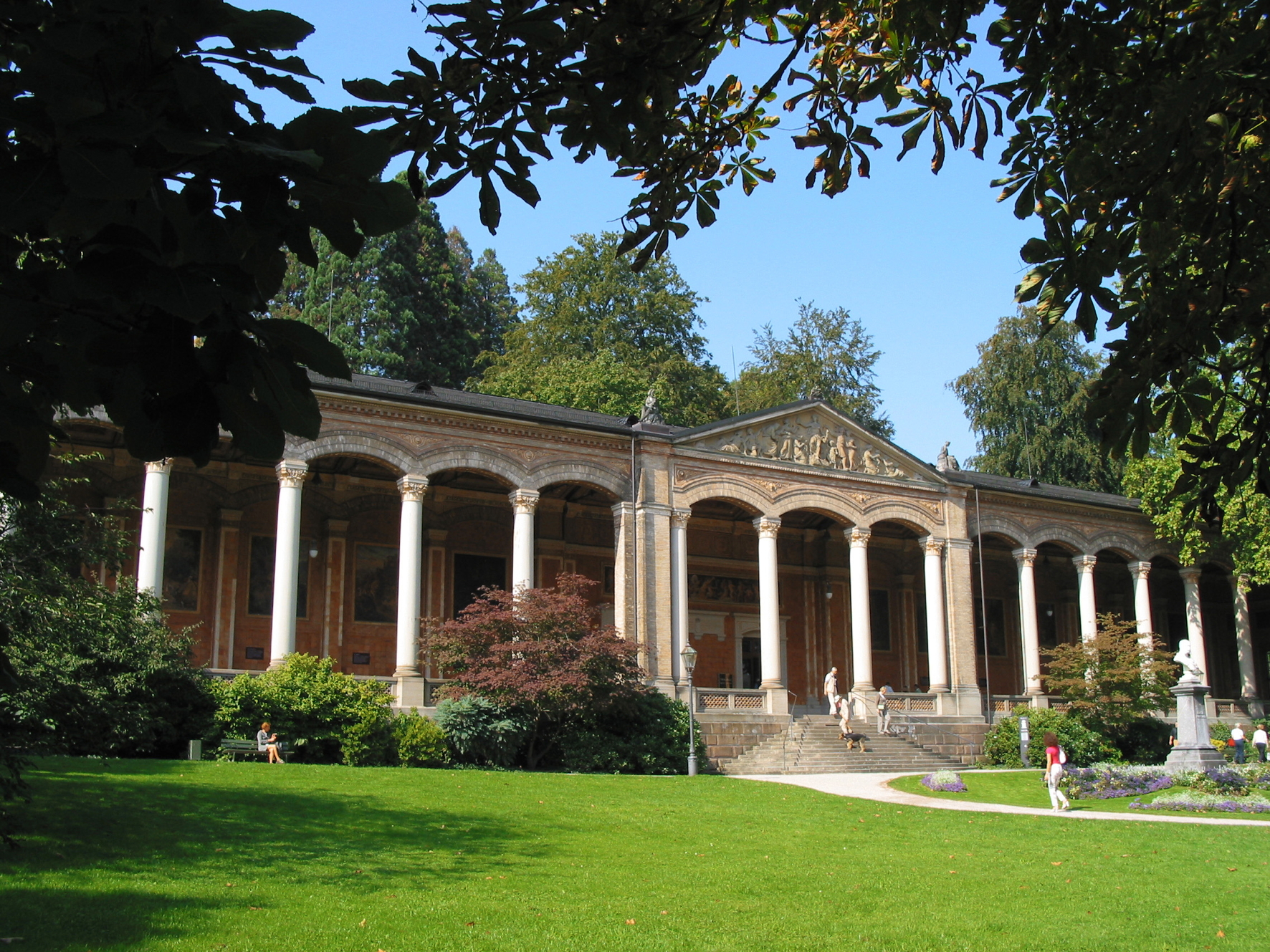Set between the Black Forest and the Rhine Valley, Baden-Baden spreads along the bank of the small river Oos, a charming green setting, rich in hot mineral springs. At the end on the 19th century, this sophisticated thermal town was known as the Summer Capital of Europe, where an international crowd gathered for social and cultural events, including composers such as Johannes Brahms or Clara Schumann,who found here a place of creativity and inspiration .
Today Baden-Baden is a unified green cityscape, where the arts and health flourish side by side, and where traditional spa-town activities such as international festivals, horse racing, the theatre,the Festival Hall and the Casino are complemented by a high standard of modern architecture, retaining the city’s flare and style.
Baden Baden Tourist Info
Historical Background
While Baden-Baden had its roots in Roman times, being known as Aquae, it was not until the redevelopment of the town at the end of the 18th century that the town boomed, when it shifted its focus to the green countryside and the first promenade house were built along the baks of the Oos.
After 1800, an intensive construction boom took place in Baden-Baden following the plans of the building director of the Grand Duchy of Baden, Friedrich Weinbrenner, who designed the suburb of Oos, the Kurhaus, Badischer Hof and Jesuit College (today’s town hall). The Frenchman Jean-Jacques Benazet took charge of the casino in 1838; he expanded casino operations and invested the profits in the development of the spa resort, a time when Baden-Baden became a fashionable spa resort for Europe’s most exclusive socitety.
By 1871, the focus on thermal water had intensified, and large modern spa palaces emerged on the Florentine Hill on the tightly structured medieval ground plan of the town.
In response to constructional interventions in the historical cityscape after World War II, extensive planning and architectural measures were adopted in the 1970s, allowing the city today to present itself as a unified green cityscape with the flair of the 19th century and numerous prestigious historical structures: the Kurhaus and the Casino, colonnades, the drinking hall, the theatre, the Russian and Romanian Romanian Orthodox Churches, grand hotels, villas…
As in the old times, today famous contemporary artists have perpetuated themselves here with their works, contributing to the the history of the spa resort , which is chronicled in its many museums, and continuing the cultural tradition of Baden-Baden, rich in music events, literary festivals, exhibitions…

The modern Caracalla Spa and the historic Roman-Irish “Friedrichsbad”, along with many exquisite spa hotels, offer a wide range of spa treatments in Baden-Baden
The health centre is completed with a network of medical and therapeutic clinics of the highest standards
The waters
Springs & Spas
At the foot of the Florentine Hill, below the former Grand Ducal castle, Baden-Baden mineral waters rise to the surface in twelve hot thermal springs, all rich in sodium chloride. Artesian pressure lets the water rise to the surface from a depth of 1200 – 1800 m with temperatures between 56°C and 68.8°C, some of the hottest springs in the whole of Baden-Wuerttemberg. Approximately 800,000 litres of thermal water rise to the surface each day.
These waters are indicated for cardiac, vascular and circulatory diseases, locomotor and posture disorders, rheumatic ailments, gynaecological disorders, diseases of the nervous system, psychosomatic states of exhaustion and general weak conditions, Treatments are focused on preventive medicine and rehabilitation therapies: anti-pain, anti-stress, anti-aging, day spas, reflexology, fango, fitness and activity. There is also a special line of biocosmetics beatuy products.
Main Springs
Ursprungsquelle, Brühquelle, Judenquelle, Ungemachquelle, Höllenquelle, Murquelle, Fettquelle, Kühler Brunnen, Armenbadquelle, Büttenquelle, Klosterquelle
Earliest known use
Pre-Roman
Hottest Spring
68.8 ºC
Chemical Elements
Sodium chloride with ithium, cesium, silica, boric acid manganese,magnesium and traces of cobalt, zinc and copper

